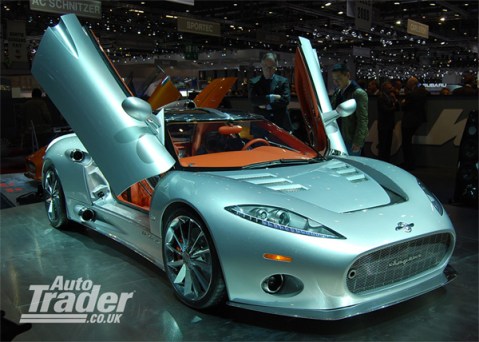 Things were looking bleak for Swedish automaker Saab, a GM subsidiary. Late in November Swedish sports car-maker Koenigsegg walked away from a pending deal that would have united the two Swedish automakers and preserved Saab’s key assets. With a similar Saturn fizzle leading to the shuttering of the brand, many speculated that the Saab story might end in a similar fate.
Things were looking bleak for Swedish automaker Saab, a GM subsidiary. Late in November Swedish sports car-maker Koenigsegg walked away from a pending deal that would have united the two Swedish automakers and preserved Saab’s key assets. With a similar Saturn fizzle leading to the shuttering of the brand, many speculated that the Saab story might end in a similar fate.
The failure, in part, led to the resignation of Obama-endorse GM CEO Fritz Henderson, and his temporary replacement by GM Board Chairman Ed Whitacre, a former AT&T executive.
In the eleventh hour it appears that Whitacre has brokered a deal to save Saab, but it will come at the cost of brand removing some of the brand’s most valuable assets and selling them in a separate deal. Dutch automaker Spyker Cars NV, a maker of $200k+ USD luxury sports cars such as the C8 Aileron, has reportedly emerged as a frontrunner and is on the verge of finalizing a deal with GM to buy most of Saab’s assets. However, technology for the 2010 Saab 9-3 and 9-5, two of Saab’s most popular models, will be sold to China’s Beijing Automotive Industry Holding, Co.
The Spyker deal is also contingent on the EU handing Spyker a 400 million-euro ($585 million USD) loan from the European Investment Bank. Despite the many uncertainties surrounding the non-finalized deal, there is some optimism. Describes Mike Tyndall, an automotive analyst at Nomura Securities in London, “[The sale] would be a step in the right direction. I’m not sure if it will be viable in the long term given Saab’s small scale and weakened brand image.”
The deal with BAIH seems more certain. The Chinese auto firm will receive Saab’s turbo-engine and gearbox technology, as well as the 9-3 and 9-5 platform assets, in exchange for at least $281M USD, according to sources. The tech will likely allow BAIH to produce rebranded Saab luxury sedans, sating the Chinese consumers’ lust for luxury autos. While it will be painful to give up the popular models, it’s worth it, according to Saab’s engineering union head, Haakan Danielsson, also a member of the company’s board. He states, “This is exactly what we need. We can live a long time on this.”
Spyker, based in Zeewolde, Netherlands, is bidding for Saab in conjunction with Chairman Vladimir Antonov’s RMC Convers Group. According to sources other bidders also eyeing Saab include Merbanco Inc., a Wyoming-based investor, and billionaire Ira Rennert’s Renco Group Inc.
BAIH may only be one of two Chinese auto firms to own assets from a Swedish luxury automaker. Ford is in advanced negotiations to sell its Volvo brand to China’s Zhejiang Geely Holding Group. Both parties are pushing for a finalized agreement to be reached “as soon as practicable”, according to the Chinese firm.


